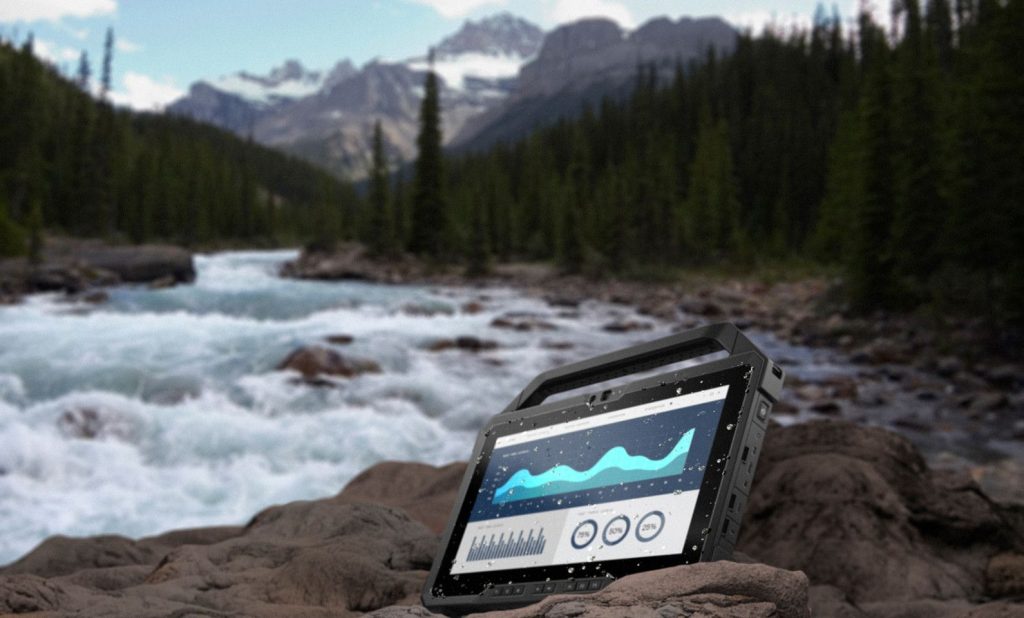In our technology-centric world, rugged tablets have become vital for enhancing productivity, particularly in fieldwork and outdoor activities.
Their high performance and versatility make them an indispensable tool for professionals working in challenging circumstances. So, let’s delve deeper into how these rugged tablets can maximize productivity and transform fieldwork operations.
Top Rugged Tablet Models in the Market
Samsung Galaxy Tab Active Pro Rugged Tablet:
This 10.1″ display outdoor tablet is equipped with Snapdragon 670 chipset, an efficient 7600 mAh battery, 64 GB storage, and 4 GB RAM. And its IP68 rating gives assurance of sure resistance to water and dust.
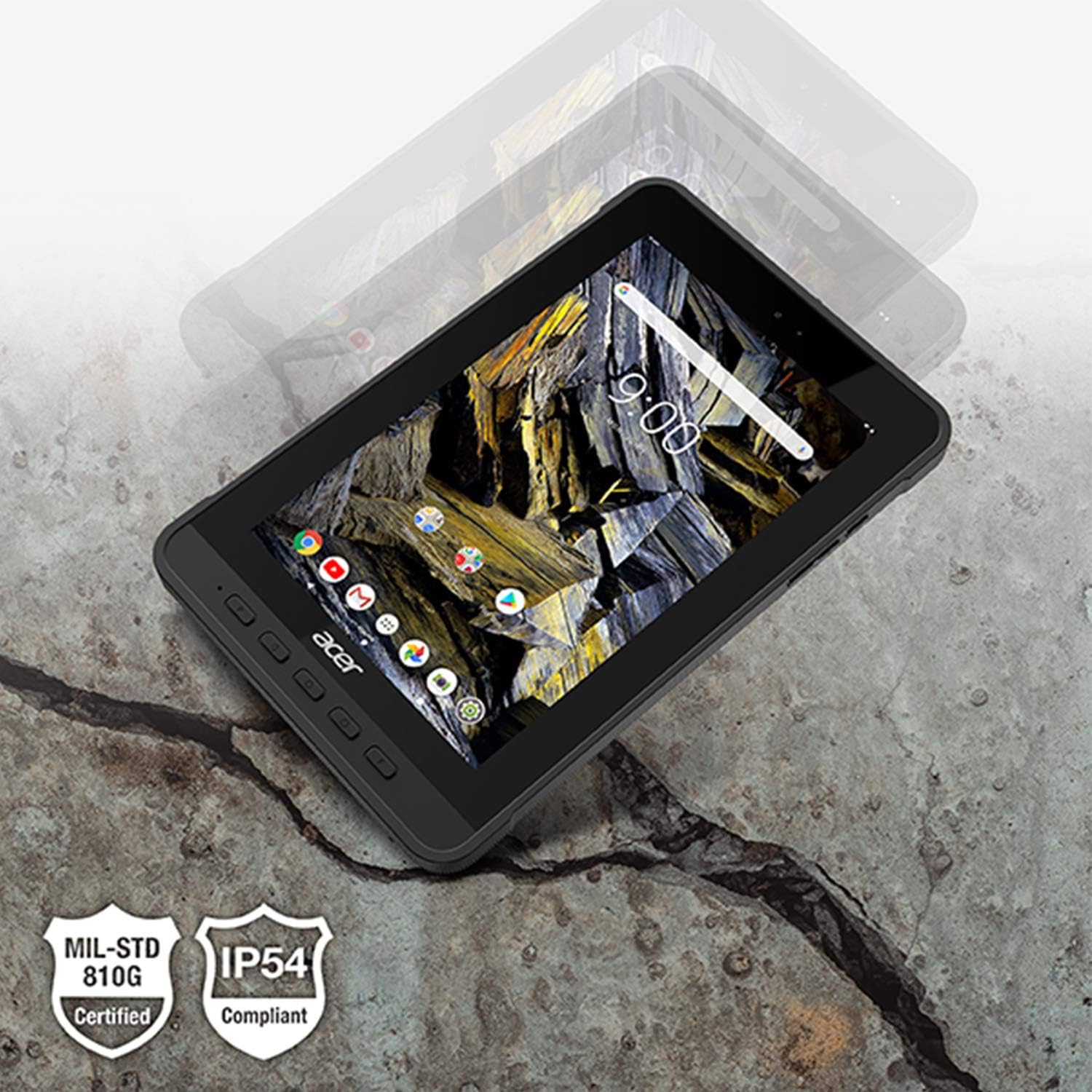
Vanquisher Ultra Rugged Tablet:
Known for its durability and high performance, it is a reliable choice for field workers. It can stand water, dust, and shock, making it suitable for challenging environments.
Samsung Galaxy Tab Active 2 Rugged Tablet:
This is another rugged offering from Samsung, featuring a smaller 8″ display but maintaining IP68 water and dust resistance. It also includes an S Pen, providing additional functionality.
Dell Latitude 7212 Rugged Tablet:
With a robust build and powerful performance, the Dell Latitude 7212 comes with an 11.6″ display and can withstand extreme temperatures, drops, and shocks. Its glove-capable multi-touch feature makes it user-friendly in various work conditions.
Panasonic Toughbook A3 Rugged Tablet:
The Toughbook A3 is a fully rugged tablet with a 10.1″ display. It offers flexible configurations, extended battery life, and Panasonic’s suite of management and security features.
The Panasonic Toughbook 33 Rugged Tablet:
This is a more substantial option from Panasonic, boasting a 12″ screen. Its versatility shines through in its 2-in-1 functionality, serving as both a laptop and a tablet, making it an ideal choice for use in challenging environments.
MobileDemand Flex 10B Rugged Tablet:
The Flex 10B is lightweight yet durable. It has a 10.1″ display, up to 128 GB of storage, and a protective case for added protection from ruggedness.
Getac F110 Rugged Tablet:
Popular within the military, the Getac F110, 11.6” display, meets MIL-STD-810G standards for durability. Its features are enough to withstand water, dust, and extreme temperatures.
Panasonic Toughpad FZ-G1 Rugged Tablet:
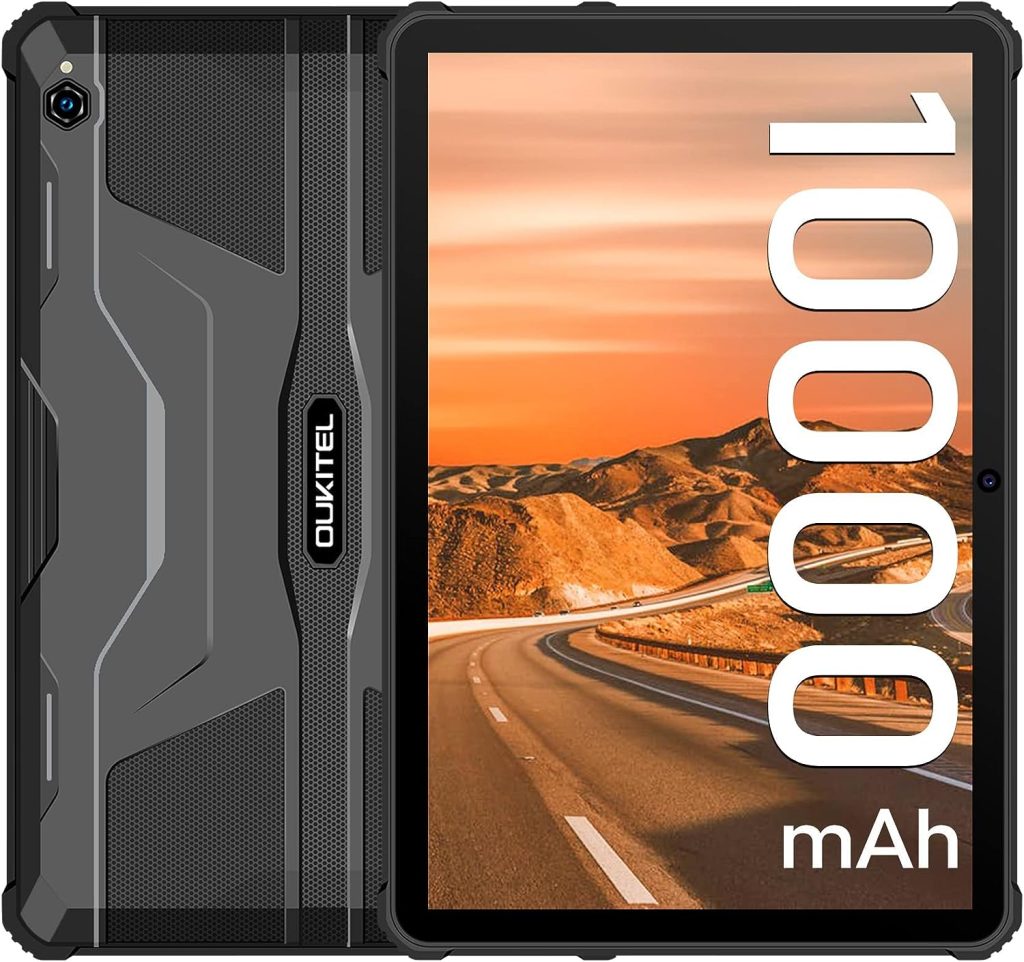
Known for its durability, the Toughpad FZ-G1 is a fully rugged tablet with a 10.1″ display. It’s long battery life and high performance make it a reliable companion in the wild.
Lenovo 10e Rugged Tablet:
Designed for students, the Lenovo 10e Chromebook Tablet is drop-resistant and has a Dragontrail™ Pro Glass screen for extra durability. It features a 10.1″ display and runs on Chrome OS.
Understanding Best Rugged Tablets: A Comprehensive Buyer’s Guide
In digital devices, tablets have become a staple for personal and professional use. But nothing will equal the special breed of “rugged tablets.”
Rugged tablets are designed to withstand harsh conditions that would typically damage a standard tablet. These conditions can include extreme temperatures, drops, shocks, and exposure to dust or water. They come with reinforced screens to prevent cracking and damage to the internal components.
Key Differences Between Consumer-Grade Tablets and Rugged Tablets
Consumer-grade tablets and rugged tablets differ primarily in the following factors.
Durability and Resilience: Consumer-grade tablets are designed for everyday personal use with sleek designs, while rugged tablets are built to withstand challenging environments, offering superior protection against physical damage and environmental factors.
Functionality: Rugged tablets have enhanced features like improved wireless connectivity, integrated scanners, and advanced security measures, which are not typically found in consumer-grade tablets.
Specialized Features: Rugged tablets boast long battery life, high-resolution displays, robust processing power, reinforced cases, and specialized software. They also offer enhanced connectivity options such as GPS, RFID, and barcode scanners, making them versatile for various tasks.
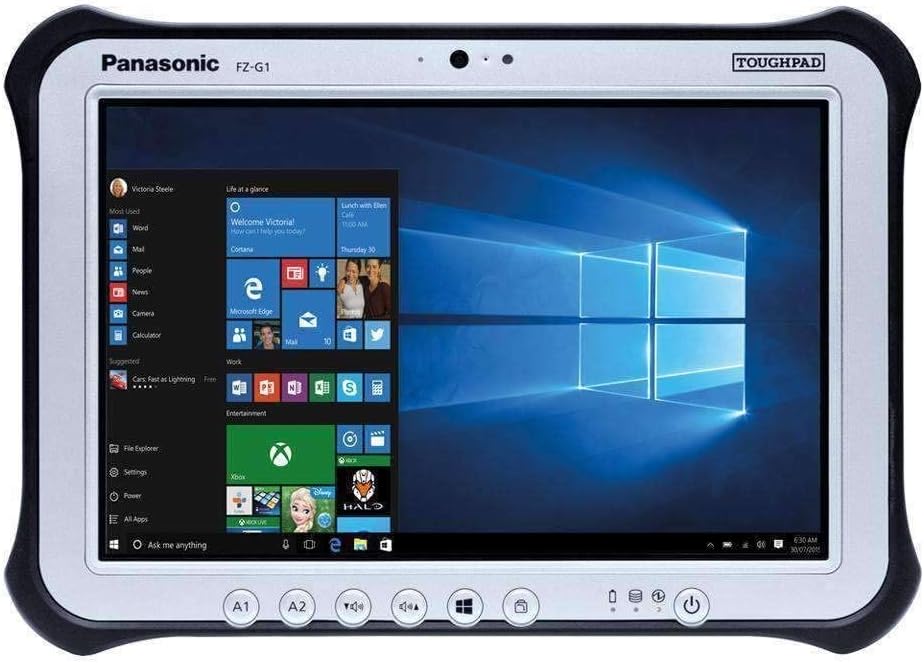
The Most Important Features to Consider
Rugged tablets are designed for optimal performance in harsh environments, making them ideal for fieldwork. They offer several advantages over consumer-grade devices.
Enhanced Durability and Resistance: Rugged tablets are resistant to water, dust, impacts, and extreme temperature variations, thanks to their reinforced casing and design.
Extended Battery Life: The longer battery life of rugged tablets allows for prolonged use without needing a power source, a significant advantage when working outdoors.
Optimal Screen Visibility: These devices have screens designed to provide clear visibility under various lighting conditions, including direct sunlight and low-light environments.
Outdoor-Readable Displays: Outdoor-readable displays on rugged tablets reduce glare and reflect less light, making it easier to read the screen even in bright sunlight.
Easy Data Input Features: Rugged tablets often include touchscreen capabilities that work with gloves and stylus functionality for precise data entry, enabling efficient and detailed task completion in the field.
Operating System: An operating system is an essential component of any rugged tablet, providing the interface between a user and their device.
Popular operating systems for rugged tablets include Android, Windows 10, and iOS, each with its own advantages.
Android: It is an open-source platform by Google and supports multiple programming languages like Java and C++.
- Allows users to install apps from Google Play Store or other authorized marketplaces.
- Supports a wide range of hardware configurations and offers customization options for users.
Windows 10: Offers features like multitasking support, a unified app store, full support for touch gestures, and Cortana voice recognition.
- Provides enterprise security features such as BitLocker for encrypting data and protection against malicious attacks.
iOS: Known for its ease of use and intuitive user interface.
- The App Store provides access to a variety of useful and entertaining apps.
- Offers a secure platform designed to protect user data and privacy from malicious attacks.
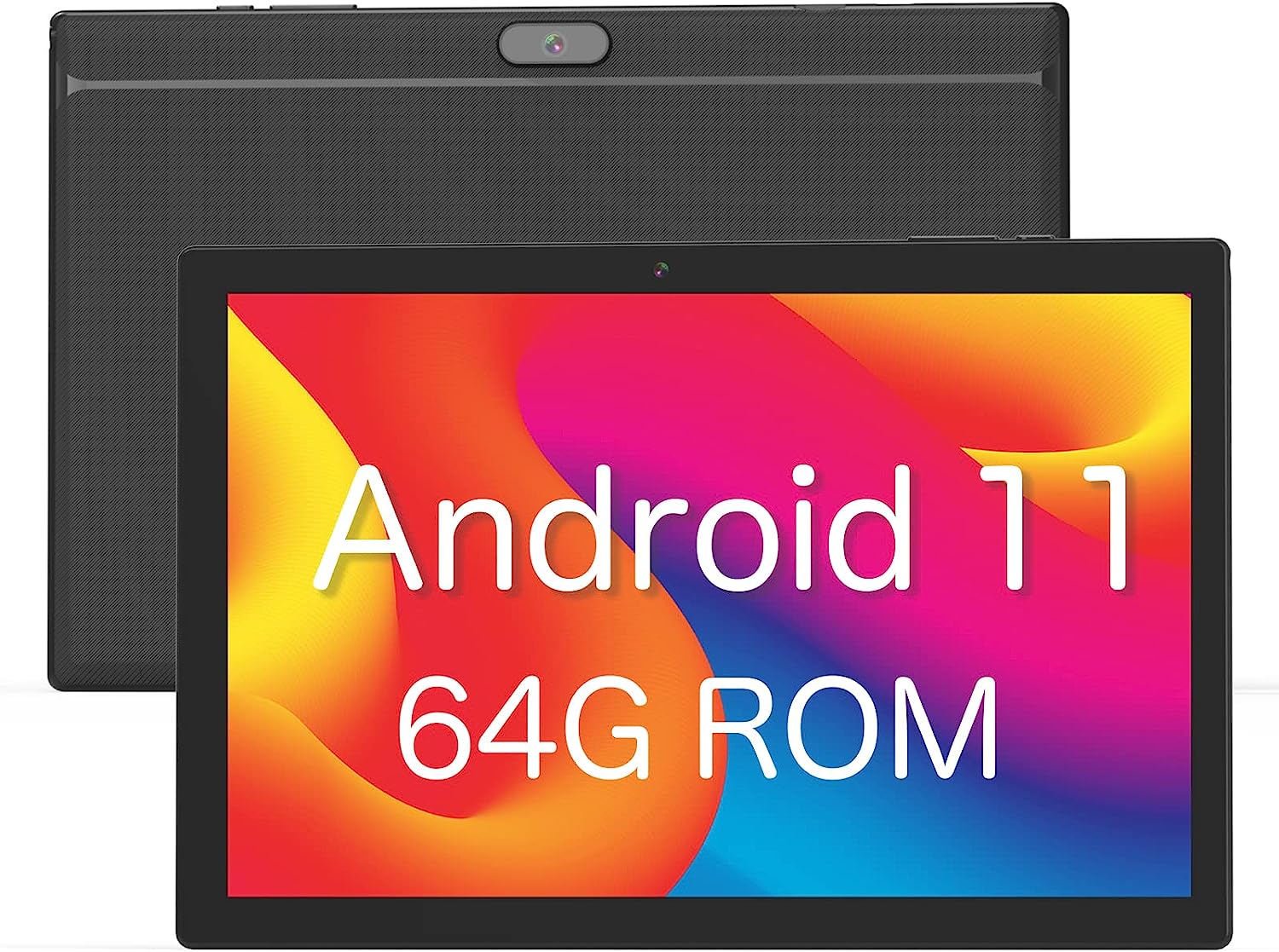
Top Touchscreen Rugged Tablets
MobileDemand Flex 10B Windows 11 Pro: Your rugged touchscreen ablet
OUKITEL RT1 Android 11 Tablet 10.1 Inch: Your power-efficient 10000mAh battery rugged tablet
AOCWEI 2023 Tablet: The 10-inch Android 11 tablet with Octa-Core, 4GB RAM 64GB.
Acer Enduro T1 ET108-11A-80PZ Rugged Tablet: The best option that has an 8.0″ WXGA IPS Touch, MediaTek MT8385 Octa-Core Processor
Android Tablet 10 Inch Tablet: The tablet with monster 64GB storage tablets, quad-core processor, and touch screen
Panasonic Toughpad FZ-G1 MK1: The Intel i5-3437U powered outdoor tablet.
Panasonic Toughbook CF-19: The touchscreen, rugged laptop convertible tablet with Intel Core i5-3610ME
Choosing the Right Rugged Tablet for Your Needs
When choosing the right rugged tablet for your needs, remember that the perfect device should withstand harsh conditions and provide optimal performance and functionality.
Here are our factors to consider when selecting the best rugged tablet for you.
Identifying Specific Use-Case Requirements
First, pinpoint where and how you plan to use your tablet. This crucial step guides you in choosing the tablet type that suits you best.
Durability and Ruggedness Levels
One of the primary reasons for investing in a rugged tablet is its suitability in harsh conditions. Check for features like dust, water, and shock resistance. The device should also withstand high and low temperatures and have a robust casing to prevent damage from drops or impacts.
Performance and Processing Power
Performance is crucial, especially if your work involves running complex applications. Consider the processor type, speed, and RAM size. A good rugged tablet should deliver smooth and efficient performance under all conditions.
Screen Size and Resolution
A tablet’s most common size is around 7-10 inches. This is a good balance between portability and usability. You can easily hold it with one hand, and it is comfortable enough for watching movies, reading books, browsing websites, and playing games.
Battery Life and Power Management
Battery life is an important consideration, especially for field work. So, an efficient power management feature is a must when choosing one. You can also check for some models that offer hot-swappable batteries for uninterrupted use.
Connectivity Options
Your rugged tablet should support various connectivity options like Wi-Fi, Bluetooth, and cellular networks. Some models also offer GPS and NFC capabilities. Ensure the device can keep you connected wherever you are.
Customization and Accessory Support
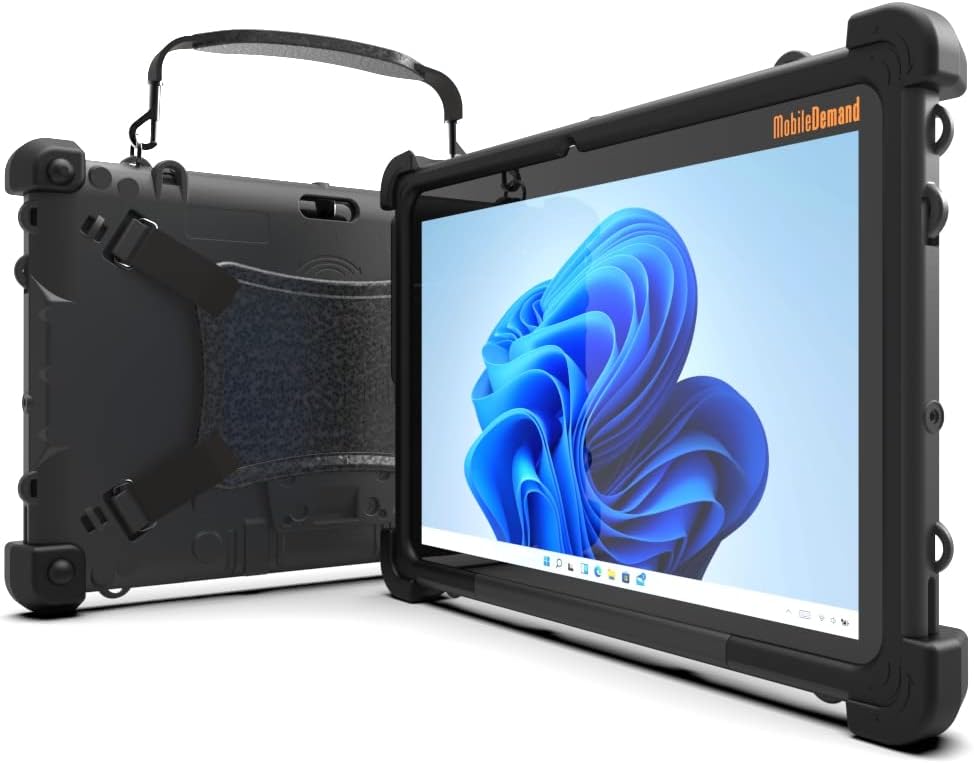
A great rugged tablet should support a range of accessories and customization options. This could include barcode scanners, card readers, vehicle mounts, etc.
Conclusion
In conclusion, selecting the right rugged tablet involves careful consideration of your specific use-case requirements and various factors like durability, performance, screen size, battery life, connectivity, and customization options.
Rugged Tablets FAQs
What is a rugged tablet?
Rugged tablets, mobile computing devices designed to endure harsh environmental conditions like dust, water, and extreme temperatures, find typical use in construction, military, and emergency services.
What makes a tablet “rugged”?
A tablet is considered “rugged” if designed to withstand harsh conditions that a regular tablet couldn’t handle. This includes being drop-resistant, dustproof, waterproof, and able to operate in extreme temperatures.
Can I use a rugged tablet for everyday use?
While rugged tablets are designed for harsh conditions, they can be used for everyday tasks. Some people prefer them for everyday use due to their durability and long lifespan.
Do rugged tablets have the same features as regular tablets?
Rugged tablets possess all the functionalities of standard tablets, including touch-sensitive screens, photographic capabilities, and the versatility to operate a wide range of applications. However, they also have additional features like reinforced casings and high-brightness screens for outdoor use.
Are rugged tablets waterproof?
Yes, most rugged tablets are designed to be waterproof or at least water-resistant. They should be able to endure exposure to rain or accidental spills without damage.
How durable are rugged tablets?
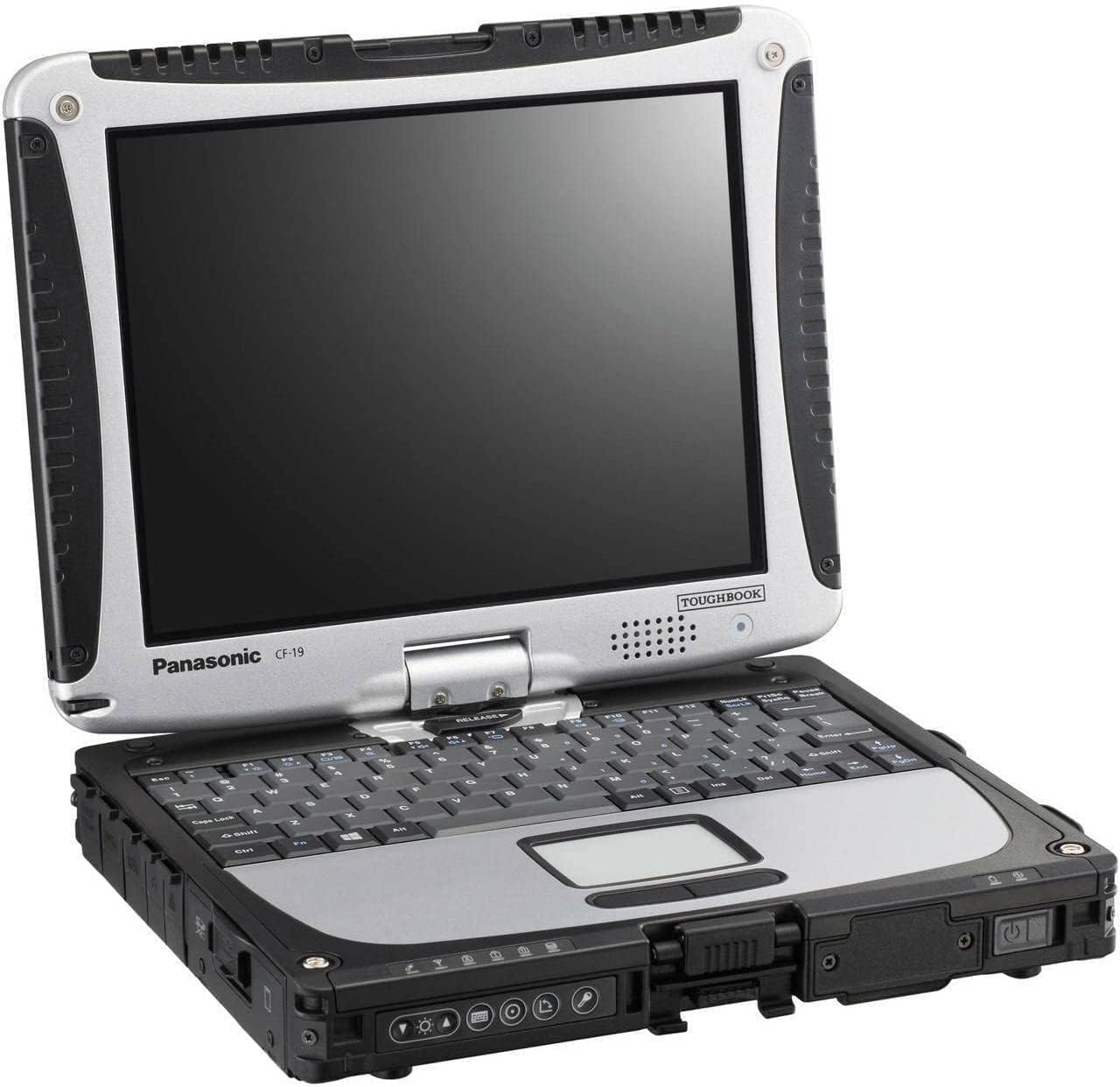
Rugged tablets are designed to be highly durable and withstand tough conditions. They possess reinforced frames, watertight seals, hardened glass, and shock-resistant components. They undergo rigorous testing for durability and can survive harsh environments such as exposure to salt spray, dust, and rain. While Android devices generally have a lifespan of around 3 years, rugged tablets from some brands like Samsung can receive updates for up to five years. However, it is recommended to replace tablets every three years to maintain the security features, memory size, and speed needed for effective functioning.
Can rugged tablets withstand extreme temperatures?
Yes, rugged tablets are built to operate in extreme hot and cold temperatures. They often have special features like heated screens for use in freezing temperatures.
Are rugged tablets more expensive than regular tablets?
Rugged tablets, designed to withstand harsh conditions and resist damage, are generally more expensive than regular tablets. The cost can average from $600 to $3,000 or up. Although it can be costly afront, these tablets can be more cost-effective in the long run due to their durability and lower likelihood of breakdowns. They may not be as technologically advanced as regular tablets, but their resilience makes them suitable for professional use in challenging environments.
What industries typically use rugged tablets?
Rugged tablets are commonly used in industries that require mobile computing in challenging environments. This includes the military, construction, field service, public safety, and healthcare.
What does “military grade” mean in the context of tablets?
“Military grade” means that the tablet has been tested to meet the specifications expected by the military. This usually involves resistance to drops, shocks, vibrations, and harsh environmental conditions.


